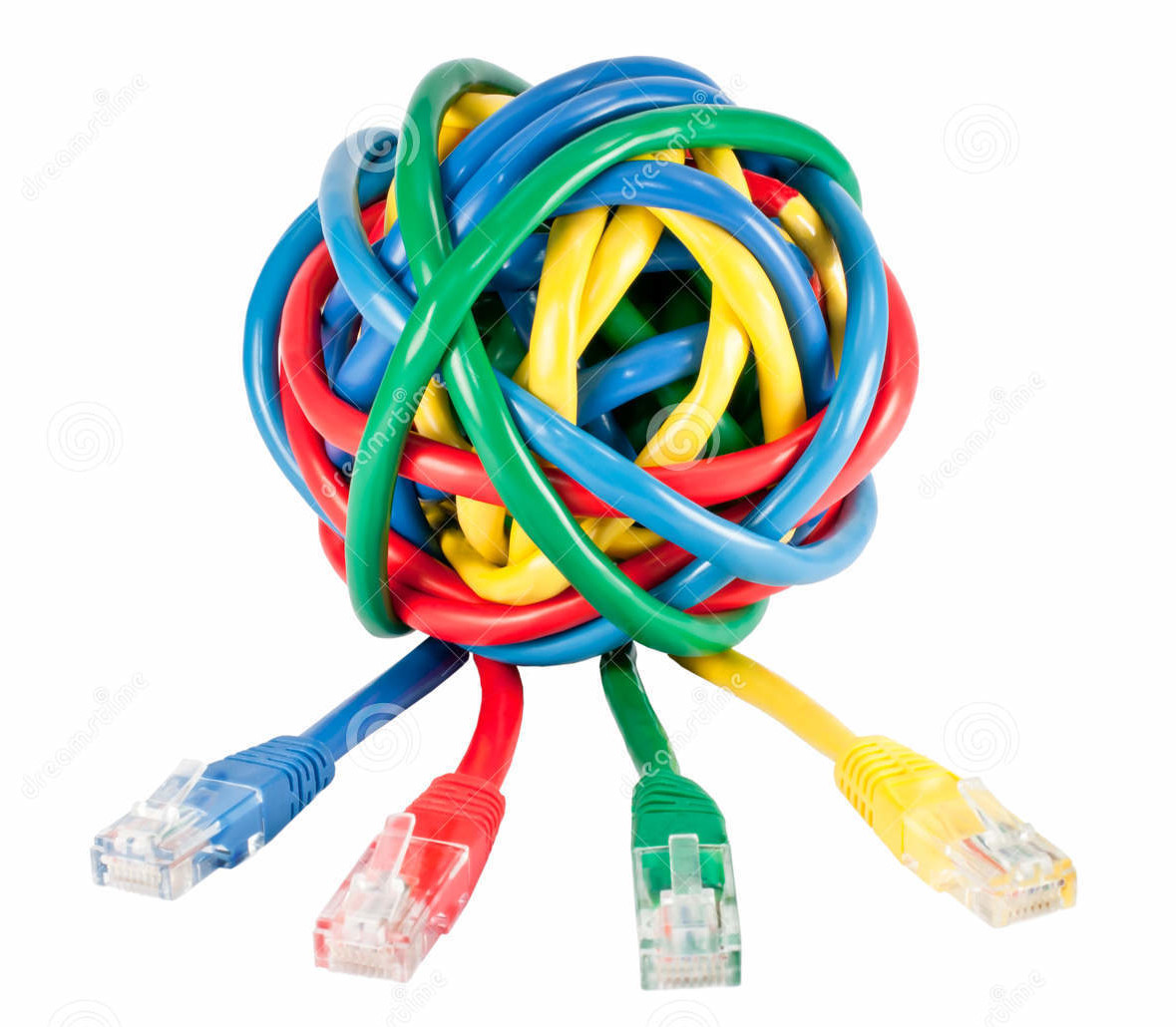I recently had CAT6 network cabling run under my house and thus, the intent of this new article series is to share the experience and provide tips to others who are considering the effort.
An initial write-up of the first article led me to realise that the amount of material here deserves multiple articles, and thus the birth of this new Writing Serial has eventuated:
- Initial Decisions
- Design
- Installation
- Future Opportunities (this article)
This article shifts focus to not just consider my immediate future opportunities within the current home, but takes a look at the general technological trends, including NBN.
Existing Network Extensions
Future expansion of my home network is a clear possibility given my Netgear Gigabit Unmanaged Switch has a capacity of 16 ports and this recent rollout has only taken up another six ports, notwithstanding the 2-3 ports utilised locally in the immediate home office environment. The potential remains for another 10 ports to be wired up within the house before I need to consider upgrading this key network element.
A number of prime locations around the home offer themselves as likely future points where cabling could be run to as part of installing additional network ports. The fourth bedroom, dining area and even the closet where the alarm central box is located are these locations.
Internet Connection
CAT6/Category 6 cabling, as was discussed in the initial decisions, provides ample future proofing for the next 5-10 years. The bandwidth and data transmission speeds that CAT6 offers is more than enough for the home office environment, where video streaming is the most likely intensive demand on network speeds. When considering the various devices and use cases they each generate, it is clear that as all the devices connect together, the remaining bottleneck is the internet connection itself. Currently, we have a Optus HFC/cable connection operating on the DOCSIS 3.0 standard, which means upload speeds are capped to 1.0Mbps whilst the download stream has ranged between 40 and 90Mbps depending on the time of day. For residential consumers, this offering is arguably the best and fastest internet connection offering available in the country that is marketed to consumers. To improve and get better speeds, one needs to then consider non-consumer (business) offers.
Greenfield Designs
One alternate way to think of future possibilities for a wired network is to start from scratch and consider the core use cases. So far, this series has focused on the sole use case of wiring up computer and home entertainment devices (PS3, Apple TV, receiver). If we start to expand our use case consideration set, the next tier of devices and use cases extends to other devices and machines around the home. Taking the example of corporate network environments, IP telephony could be considered another use case for the residential home.
As part of taking a greenfield approach, we have to acknowledge that the current network set-up has created a brownfield environment, so any move to a future network design based on a greenfield approach may result in having to throw away most of the existing infrastructure and wiring. For example, if a greenfield approach were applied to my home, I would make the case that the internet connection point and accompanying network switch/hub should be relocated from the current south-west corner to a more central position. Based on that assertion, one of our closets in the hallway would be better suited for housing the equipment. Additionally, given our alarm central box is located in one, that location could be more conducive to being the central point for all cabling and the switch instead. This relocation would also have the effect of moving the wireless access point also to a more central location, and allow for a better signal strength at the far north-east corner of the property where the garage is located.
The ultimate greenfield opportunity would be for new homes being constructed. Nowadays, modern homes are built on concrete slab foundations, so there are no crawl spaces below the floor where cables can be run. Instead, as part of the house construction design, the inclusion of cable runners and conduits should be planned. Having a central location for the hub and internet connection should be a key consideration. This is particularly important given the rollout of NBN since this central communication stack will serve as the optimal entry point for the NBN network termination.
NBN
The impact of the NBN on existing dwellings is likely to see their modem/end-point device installed, along with any required cabling. The NBN infrastructure begins from the boundary of your property with a lead-in conduit (LIC) which is a plastic pipe protecting the NBN cable. That cabling runs through the ground to the side of your home where a utility box is installed. From the utility box, a lead is run to the user-selected area where the internet connection is to be installed. An NBN connection box is installed, followed by your internet service provider’s modem. The end result is that you end up with an additional modem/device alongside your existing devices.
Voice Over IP
Returning to the IP telephony/voice over IP use case, to pursue and implement this use case, replacing the current RJ11 connectors and copper wiring with RJ45/CAT6 cabling would also require a telephone adaptor. the following diagram “Voip-typical” is licensed under CC BY 1.0 via Wikimedia Commons.
Additionally, having IP telephony devices installed would be required in order to take advantage of the Voice over IP service, although equally appealing is the fact that acquiring hardware is not necessary since VOIP software can also be installed on any computer within the network. Moving to a VOIP solution within a residential dwelling is one way to remove the traditional home telephone service, but anyone considering this should first consider if they need a home telephone service in the first place, since mobiles are now the dominant communication device. There are nowadays some sophisticated solutions on the market which allow home-based telephones to leverage smart phones whereby the home-based units become active when the presence of the smart phone is detected within the geographic zone of the home.
Machine to Machine / Internet of Things
As we pursue the next evolution of a wired network, or any network for that matter, we start to shift into the world of machine-to-machine (M2M) or the internet of things (IoT). For consumers in the home, it is all about a connected home environment:
- Smart lighting
- Smart electricity meters
- Smart water meters
- Smart gas meters
- Smart TVs
- Smart security systems (CCTV, alarms)
- Smart cars
Home automation of all the above is a reality today, but at a high cost. Increasingly, the connectivity of all these devices are likely to be via wireless transmission, although some of the underlying infrastructure (meters and security systems) may also leverage a wired connection to the internet. In this kind of home, the heavy reliance on technology may offer savings and efficiencies. Imagine waking up to a home where the heater had automatically switched on a few minutes earlier. Imagine too that you were woken up by your blinds automatically being drawn open as part of your alarm clock. You walk to the bathroom or kitchen and where it is dark, the lights automatically switch on. Your coffee may also be automatically brewing, and automatic pet food dispensers have taken care of any pets. Motion sensors coupled with indoor positioning systems ensure that lights are not left on unnecessarily. Your smart phone/watch alerts you to incoming messages and appointments for the day. Your smart TV will switch on according to schedule to show you the morning talk back shows. The smart fridge will have a shopping list of items requiring restocking ready for your review and approval. After adding any extra items to the list, the approval triggers a purchase order to your local supermarket for delivery or pick up. Walking out the house may also see the front door automatically locked and trigger a robot vacuum cleaner to commence a run of the downstairs whilst the CCTV and alarm monitoring is activated. Approaching the garage could also automatically trigger the door to open and the car to start.
Such a world of possibilities is not that far off. In fact, a lot of the above description is already possible today, just in a more basic implementation. The smart meters will enable utility providers to retrieve meter readings automatically without having to send someone to conduct the physical in-person reading. Equally consumers will be able to see in real-time their usage and adjust as necessary. In some other cases, technologies like indoor positioning systems are still very new and require more time to improve before they can be used in a mainstream market. Technologies like keyless entry for cars is also still in the earlier phase of market adoption and will need refinement so that no major security flaws are easily exploited. Just this week, it was confirmed that car hacking is occurring here in Australia – these are examples of where the technological innovation needs to be tightened and tweaked so as to address these undesirable side effects.
Wireless Networking
Wired networking in a residential environment may make sense for some people, but others will pursue the wireless mode/solution. Telstra has been successfully rolling out a nation-wide Wi-Fi network over the last six months and that kind of infrastructure offers the public alternatives to relying on the mobile network. Moves like this are in the interest of the telecommunications providers who seek to free up the congested mobile network by distributing traffic across the two transmission networks. With new services like Netflix having being launched in Australia, a surge in internet traffic has been identified as households and individuals tap into this new paradigm of unmetered traffic for video streaming. The wireless networking standard of today – 802.11ac has arrived in time to enable such services reliably. Both a wired and wireless network offer consumers and households greater choice in the way they connect to the internet.
As more and more wireless networks pop up around residential areas, high density residential areas may find themselves in a situation where the number of Wi-Fi networks starts to create problems with competing signals on the same 2.4GHz radio frequency. Over the years, I have seen the number of wireless networks increase in my immediate neighbourhood, but it is in apartment blocks where this problem can really affect the reliability of a wireless network. There are solutions to minimising the overcrowding effect – the easiest solution is to change your wireless router settings to utilise the 5GHz band instead of the traditional 2.4GHz band. Sometimes, it is also the situation where it is non computer devices that are interfering with the 2.4GHz range – microwaves, baby monitors, wireless cameras and non-DECT cordless phones.
—-
If you are considering a wired networking option, take into consideration the NBN factor and plan for it as part of your current networking endeavour. A future smart connected home may also form part of your future planning, so having bandwidth for that future should also be taken into consideration.
All the best for your own wired networking efforts. Hopefully your experience will be just as good if not better than my own. Thanks for reading!



You must be logged in to post a comment.